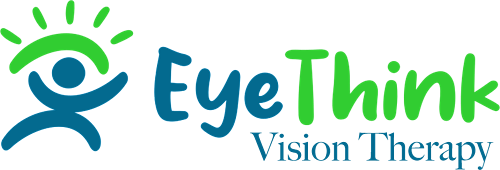If your child’s been diagnosed with amblyopia (better known as “lazy eye”), you’ve probably already heard the standard advice: “Put a patch over the strong eye.”
Sounds simple. But if you’ve ever tried it, you already know—it’s anything but.
Kids hate it. Parents feel guilty. Teachers notice. And most of the time? The results fall short.
Here’s the part nobody tells you…
Amblyopia isn’t really an “eye problem.” It’s a brain problem. And once you understand that, the whole game changes.


What’s Really Going On
Amblyopia happens because the brain decides to ignore one eye. It’s not that the eye is broken—it’s that the brain has basically said, “No thanks, I’ll just use the other one.”
The result? One eye lags behind, and the brain gets comfortable with the bad habit of shutting it out.
So you can patch all day long, but unless the brain learns to use both eyes together—you’re not solving the real problem.
Why Patching Falls Flat
Sure, covering the stronger eye forces the weaker one to work harder. You might get some improvement in sharpness.
But here’s the catch: in real life, we don’t use one eye at a time. We use both eyes together—constantly.
And that’s the key. The brain is built for teamwork. It wants both eyes feeding it information.
Patching doesn’t teach teamwork. It just creates a temporary workaround. Take the patch off… and more often than not, the brain slips back to its old ways.
The Science (Without the Jargon)
Researchers studying vision (yes, even monkeys) have proven this: the brain is wired to use both eyes. When one gets shut out, it’s not because the eye “can’t work”—it’s because the brain has learned the wrong shortcut.
Translation: if the brain can learn the bad habit… it can unlearn it.
A Smarter Way: Train the Brain
Instead of punishing the strong eye with a patch, modern therapy trains the brain to use both eyes together.
Through targeted activities, special lenses, or even digital programs, kids can retrain their brain to:
- Reduce suppression (the “shutting off” of one eye)
- Improve depth perception
- Read with less struggle
- Play sports with more confidence
- And, most importantly, see the world the way it was meant to be seen—with both eyes working as a team.
No stigma. No fighting over patches. No frustration.
Parents Ask All the Time…
“Does my child still need a patch?”
Sometimes. But it doesn’t have to be the only tool. Binocular training often works better.
“Isn’t it too late after age 7?”
Nope. The brain stays adaptable well beyond childhood. Teens—even adults—can benefit.
“How do I know if this is right for my child?”
Start with a developmental or behavioral optometrist who specializes in binocular vision therapy. They’ll test how your child’s eyes and brain are working together.
The Bottom Line
If your child is struggling with amblyopia, know this: patching is not the answer.
By treating amblyopia as a brain condition (not just a weak eye), we can help kids develop stronger vision—and stronger confidence—for life.
Ready for a Smarter Way Forward?
If you’re done with tears over patches and wondering “Is there more we can do?”—you’re right. There is something better.
To learn how modern, brain-based amblyopia treatment works (and why it’s already helping children thrive) click here to know more!


